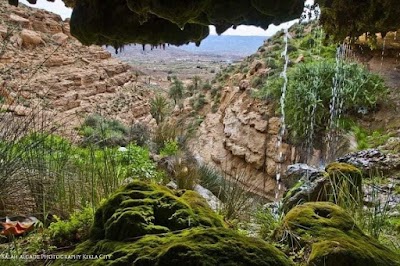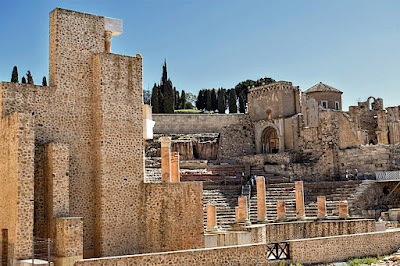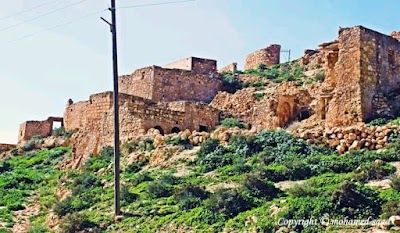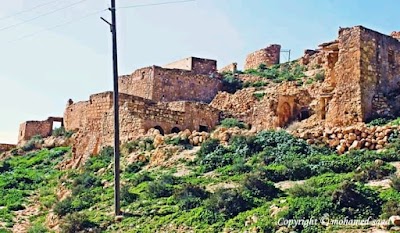Al Jabal al Gharbi Fortifications (تحصينات الجبل الغربي)
Overview
Al Jabal al Gharbi Fortifications, located in the Jabal al Gharbi District of Libya, offer an intriguing glimpse into the rich history of this North African region. Nestled within the stunning mountainous landscapes of northwestern Libya, these fortifications serve as a captivating destination for history enthusiasts, culture seekers, and adventurous travelers alike. They provide a panoramic view of Libya's past, from ancient civilizations to more contemporary historical events that have shaped the region's identity.
Ancient Origins of the Fortifications
The origins of Al Jabal al Gharbi Fortifications trace back to the ancient Garamantian civilization, which thrived in the Fezzan region of the Libyan desert. Renowned for their advanced irrigation techniques and fortified settlements, the Garamantes constructed impressive stone structures that once stood as bastions against rival tribes and invaders. As you wander through the remnants of these early fortifications, you’ll be transported to a time long past, where the echoes of daily life can almost be heard through the ancient walls.
Roman Influence and Engineering
As centuries passed, the fortifications gained prominence during the Roman Empire's expansion into North Africa. The Romans, celebrated for their engineering prowess, reinforced and expanded these structures, leaving a remarkable legacy. Evidence of Roman occupation is evident in the construction techniques and materials employed, providing a fascinating contrast to the earlier Garamantian architecture. The Roman influence extends beyond the fortifications themselves, as the network of roads and settlements connected this remote region to the broader Roman Empire, showcasing its integration into a vast historical narrative.
Significance Through the Ages
The strategic importance of the Al Jabal al Gharbi Fortifications continued through the Islamic conquests and into the Ottoman period. Each successive wave of conquerors left their unique imprint, creating a rich and multifaceted historical site. The Ottomans, in particular, recognized the value of these highlands for their strategic vantage points and natural defenses. They fortified existing structures and utilized them as key military outposts to maintain control over the region, underscoring their enduring military relevance.
Cultural Tapestry of the Region
One of the most captivating aspects of visiting Al Jabal al Gharbi Fortifications is the blend of cultural influences visible in the architecture and artifacts scattered throughout the site. As you explore, you'll notice elements of Garamantian ingenuity, Roman engineering, and Ottoman fortification techniques coalescing into a unique historical tapestry. This architectural fusion is a testament to the area's prolonged strategic significance and the diverse cultures that have recognized its value over millennia.
Breathtaking Natural Beauty
In addition to its historical significance, the natural beauty surrounding Al Jabal al Gharbi Fortifications is truly breathtaking. The high vantage points offer spectacular views of the rugged mountains and fertile valleys below. This dramatic scenery enhances the allure of the fortifications, making it an ideal spot for photographers and nature lovers alike. The rugged beauty of the region, combined with its historical depth, creates a compelling destination for those eager to experience a piece of Libya's captivating past.
Recent History and Cultural Insights
For those interested in more recent history, the Jabal al Gharbi region played a notable role during the Italian colonization in the early 20th century and later during the tumultuous Libyan Civil Wars. The fortifications served as strategic points of control and conflict, highlighting their ongoing military relevance. Understanding these more contemporary events offers valuable context to the enduring significance of these fortifications within the region's narrative.
In addition to its historical and natural attractions, the area provides a glimpse into local culture. Visiting nearby towns allows you to experience traditional Libyan hospitality, sample local cuisine, and learn about customs and traditions that have persisted through generations. The residents of Jabal al Gharbi are known for their warmth and welcoming nature, enhancing the enriching human element of your journey.
In conclusion, Al Jabal al Gharbi Fortifications in Jabal al Gharbi District, Libya, are much more than mere ancient ruins. They represent a living chronicle of human ingenuity, military strategy, and cultural integration spanning thousands of years. Whether you're a history buff, a nature enthusiast, or a curious traveler, these fortifications offer a fascinating window into the past set against a backdrop of stunning natural beauty. So, pack your bags and prepare to step back in time as you explore one of Libya's hidden historical treasures.






